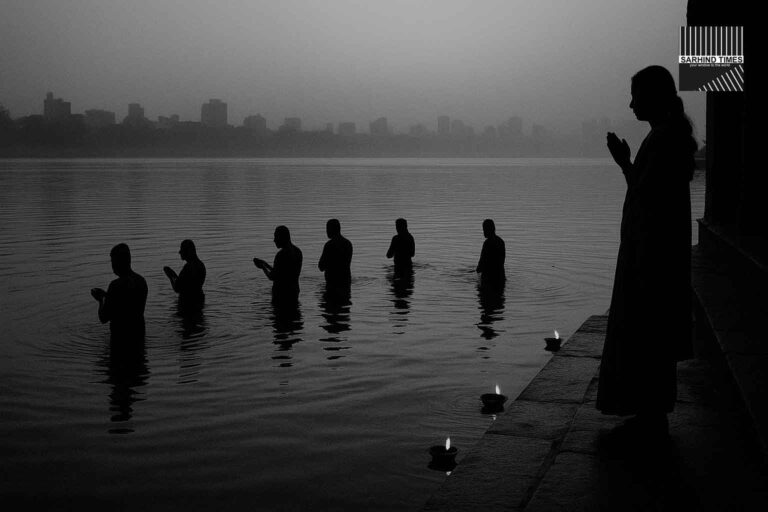Nagpur / New Delhi, 08 October 2025 — In a landmark environmental judgment with far-reaching consequences, the Supreme Court of India has held that the public trust doctrine extends not only to natural rivers, wetlands and forests, but also to man-made lakes and reservoirs. The decision came in the appeal over the redevelopment of Futala Lake, Nagpur, where a bench led by Chief Justice Bhushan Gavai underscored that governments must act as trustees, preserving ecological character, preventing alienation, and ensuring public use of waterbodies.
The court dismissed challenges to the redevelopment, but made it clear that redevelopment is allowed only under strict environmental safeguards, public access mandates, and with the maintenance of ecological balance. The verdict deepens the jurisprudence under Articles 21 (right to life), 48-A (protection of environment), and 51-A(g) (duty to protect environment) of the Constitution. Citizens and civil society actors, it said, now have a firmer legal tool to contest privatization or harmful commercialization of urban lakes.
Urban planners and municipal authorities are watching closely — this ruling may reshape norms for stormwater ponds, recharge tanks, artificial lakes in new townships, and the legal obligations for maintenance, public access, and ecological health. Even if redevelopment proceeds, the bar for diversion or alteration has just become higher.
📖 Background of the Case & Legal Landscape
The Futala Lake Litigation
Futala Lake in Nagpur is a centuries-old manmade lake (constructed in 1799) that has served as a municipal waterbody, recreation spot, and urban landmark. Developers and civic bodies had proposed beautification projects — floating restaurants, viewing galleries, landscaped edges, “art installations,” and other amenities. Concerned citizens and environmental groups challenged them, arguing interference with ecological balance and violation of environmental norms.
The High Court of Bombay had earlier directed that redevelopment must comply with environmental clearances, maintain buffer zones, and preserve ecological functions. The challengers appealed to the Supreme Court, which on 07 October 2025 delivered a full bench verdict extending the doctrine of public trust to artificial waterbodies.
Public Trust Doctrine in India: Origins & Evolution
The doctrine of public trust is borrowed from Roman and English common law traditions: certain natural resources like air, sea, water, shores and forests are held in trust by the State for the public, and the State cannot abdicate its fiduciary duty.
In M. C. Mehta v. Kamal Nath (1997), the Supreme Court had firmly embedded the doctrine in Indian law. It held that natural resources cannot be converted for private gain if doing so subverts public interest. Over decades, Indian courts have applied it to rivers, coasts, forests, and wetlands; the latest ruling now extends it to artificial lakes and reservoirs.
In the contemporary case, the Court recognized that artificial lakes, even though constructed, “drawn and created from nature or natural resources,” perform ecological and hydrological functions. Therefore, they too fall under the protective umbrella of public trust.
Key Legal Holdings & Restrictions
The judgment outlines three core restrictions on waterbodies under public trust, whether natural or manmade:
- Use only for public purpose — governments cannot permit private uses that conflict with public interest.
- No sale or alienation, even if offered at fair value — the resource must remain available for public use.
- Maintain ecological / intended function — the waterbody must preserve its ecological, hydrological, or intended public function; it cannot be diverted in a manner that damages or destroys its nature.
The Court held that redevelopment proposals which already had approvals from municipal or heritage committees, PWD, environment authorities, etc., may proceed — but under strict environmental compliance, conditions, and monitoring. The Court affirmed that not every intervention is illegal — but the burden is on the State and agencies to ensure that every project is vetted for ecological soundness.
Interestingly, the Court noted that Futala Lake, although manmade, is not covered by the statutory definition of “wetland” under the Wetlands (Conservation and Management) Rules, 2017 (as manmade tanks for drinking or irrigation are excluded). But the Court went beyond statutory definitions and anchored its protection in constitutional and public trust principles.
Thus, while the statutory wetland regime may not automatically apply, the spirit and restrictions embedded in that regime (e.g., buffer zones) ought to guide development.
🔍 Implications & Consequences
For Urban Governance & Planning
- Redevelopment approvals become riskier: Municipalities and developers will now need stronger environmental assessments, buffer zone compliance, hydrology impact studies, and meaningful public consultation before altering lakefronts or waterbody margins.
- Stricter maintenance obligations: Once redeveloped, the civic body becomes responsible for ongoing ecological maintenance (water quality, silt removal, fauna, public access, safety). The Court’s doctrine implies these are non-negotiable obligations.
- Limits on privatization & commercial use: Private concession models, floating restaurants, leaseholds, or exclusive rights over lakefronts will face legal scrutiny if they impede public use or ecological function.
- Planning of new townships/wet infrastructure: In cities planning artificial lakes in new developments, the ruling sets a higher bar. Such lakes must be designed and operated respecting hydrology, drainage, groundwater recharge, ecology and public access.
- Stormwater ponds, recharge ponds, wetlands: Many urban stormwater ponds and recharge structures (often manmade) could now be argued under this doctrine — strengthening citizen claims to protect them from encroachment.
For Environmental Activism & Citizen Rights
Citizen groups now wield stronger legal footing to challenge harmful or unchecked development around lakes. The doctrine gives cause to hold the State accountable as trustee. Projects that ignore ecological balance or public access obligations risk being struck down.
Legal petitions based on this extended doctrine may proliferate in cities with contested lakefronts — e.g., Bengaluru’s lakes, Hyderabad’s tanks, Delhi’s ponds, etc.
For Real Estate & Commercial Interests
Real estate developers who have counted on lakefront value, private docks, exclusive walkways or commercial amenities may face tougher demands. They must factor in stricter environmental safeguards, possibly higher costs and slower clearances.
On Statutory & Regulatory Regime
The ruling highlights a gap between statutory definitions and jurisprudential expansion. A waterbody may not classify as “wetland” under the statute but still attract protection under public trust doctrine. This dual layer of oversight means environmental laws, zoning laws, water laws, and municipal acts will need alignment.
Municipalities and state governments will have to rework their tendering, compliance audits, development norms, and enforcement in light of this doctrine.
Risks & Challenges
- Vagueness & litigation surge: The expanded doctrine gives wide discretion; municipal bodies might face barrage of PILs or legal challenges that can delay projects.
- Balancing development vs ecology: The Court itself acknowledged (in the Futala case) that lawful development should not be stifled — but drawing that balance will be contentious.
- Capacity & resources constraints: Cities may lack technical capacity or budgets to monitor and maintain ecological health over decades.
- Conflict of jurisdictions: Fragmented governance (municipal, state, forest, environment departments) may lead to overlapping or contradictory obligations.
#SupremeCourt #PublicTrustDoctrine #Environment #Lakes #UrbanPlanning
























+ There are no comments
Add yours